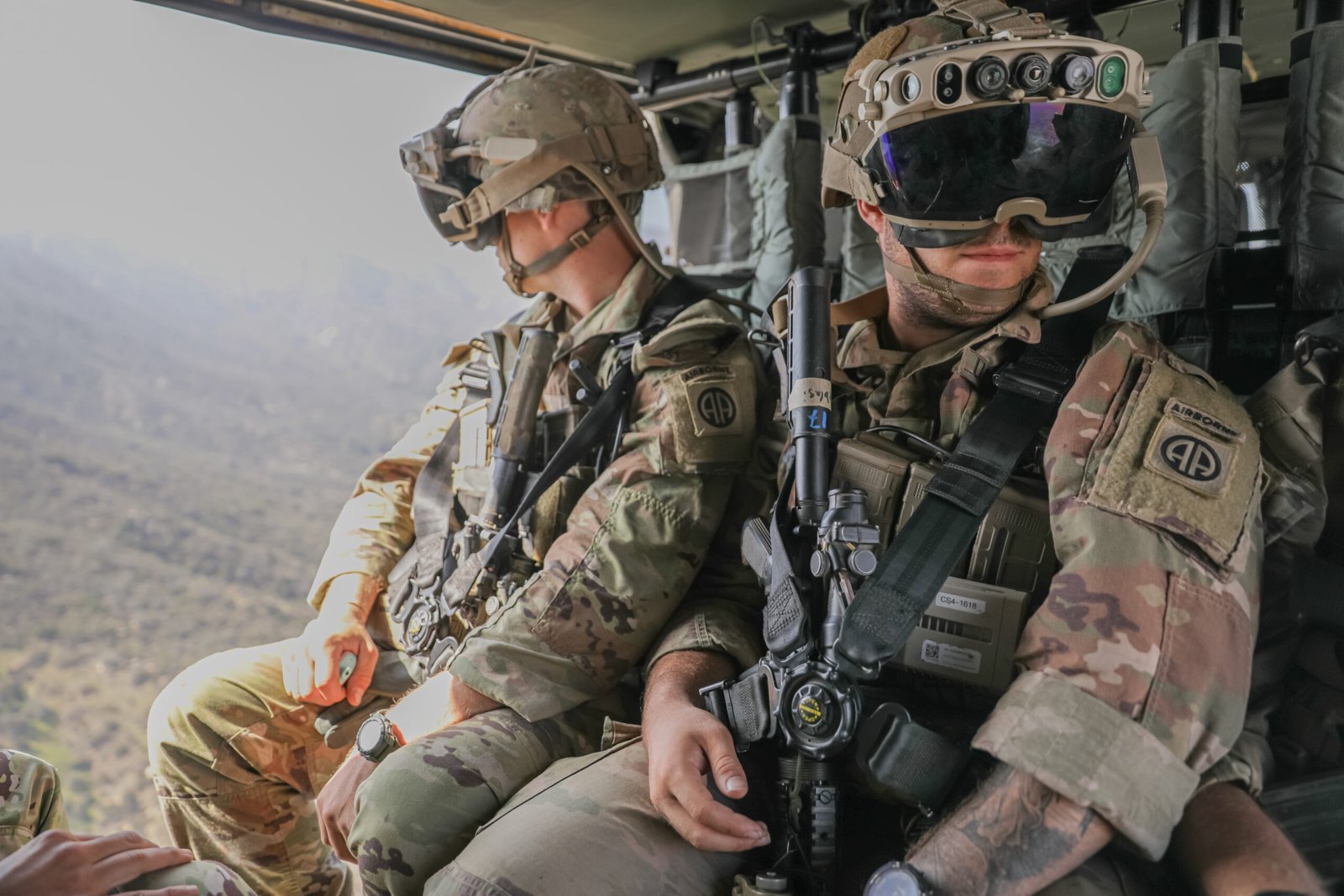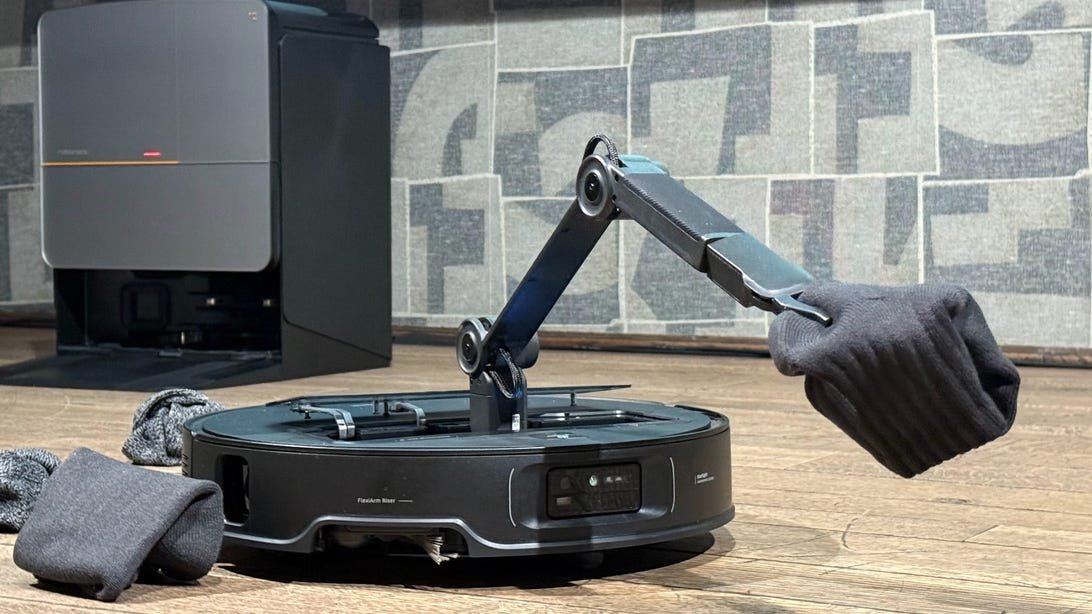Microsoft is handing over the Army’s do-it-all mixed reality device to defense company Anduril Industries, the companies announced Tuesday.
California-based Anduril formerly assisted Microsoft with the $22 billion program by integrating the Lattice platform into the Integrated Visual Augmentation System, or IVAS. Lattice allowed soldiers to see threats in real time by removing delays in processing signals between devices, according to a company statement.
Anduril will assume oversight of production, future development of hardware and software, and delivery timelines, according to a joint release from the two companies. Microsoft will continue to partner with Anduril on the project. Microsoft Azure will be the “preferred hyperscale cloud” for Anduril on all things related to IVAS.
Anduril Founder Palmer Luckey, the designer of the virtual-reality headset Oculus Rift, laid out his vision for the future of the IVAS program Tuesday in a blog post titled, “Turning Soldiers into Superheroes.”
“For me, this announcement is deeply personal. Since my pre-Oculus days as a teenager who had the opportunity to do a tiny bit of work on the Army’s BRAVEMIND project, I’ve believed there would be a headset on every soldier long before there is a headset on every civilian,” Luckey wrote.
Army’s mixed reality device set for upgrades and battalion assessment
He wrote that IVAS will allow troops to “surpass the limits of human form and cognition, seamlessly teaming enhanced humans with large packs of robotic and biologic teammates.”
The Army has conducted IVAS-controlled drone flights for microdrones, such as the Black Hornet and other squad-level drones. The device is also used for inter- and intra-squad communication, both through voice and chat. Users can share map information, coordinates or other data via the headset.
In his blog post, Luckey said his involvement with IVAS signals his return to the forefront of technology. He maintains that the program is more than just a headset.

“IVAS isn’t just another product, it is a once-in-a-generation opportunity to redefine how technology supports those who serve,” Luckey wrote. “Whatever you are imagining, however crazy you imagine I am, multiply it by ten and then do it again. I am back, and I am only getting started.”
The Army has worked closely with Microsoft on IVAS since 2018. The current system was originally built on the commercially available Microsoft HoloLens device.
The service is working on the third of five prototypes of the device since the program began.
The current version, IVAS 1.2, is the second engineering validation build, Army Times previously reported. This version includes some design changes that must be implemented in the next prototype, as the service continues gathering troop feedback.
The following updates are in the works for IVAS 1.2:
- A low-light camera with increased sensitivity
- Improved low-light focus mechanism, especially when wearing gloves
- More robust bumpers, cables, bungees and tethered solar caps
- Hinge improvements for usability, display clarity and durability
- Improved transport case and mission bag for better storage and protection
- Minor visor and display improvements for greater clarity and durability
- Software improvements
This spring, soldiers with the 4th Infantry Division at Fort Carson, Colorado, will conduct a battalion-sized operational field assessment of the device. Following the development of its 1.2 version, the Army will be poised to award a production contract to build the device for full fielding.
Anduril, founded by Oculus Rift creator Palmer Luckey, is taking over the Army’s $22 billion program to create an augmented-reality headset.
Microsoft is handing over the Army’s do-it-all mixed reality device to defense company Anduril Industries, the companies announced Tuesday.
California-based Anduril formerly assisted Microsoft with the $22 billion program by integrating the Lattice platform into the Integrated Visual Augmentation System, or IVAS. Lattice allowed soldiers to see threats in real time by removing delays in processing signals between devices, according to a company statement.
Anduril Founder Palmer Luckey, the designer of the virtual-reality headset Oculus Rift, laid out his vision for the future of the IVAS program Tuesday in a blog post titled, “Turning Soldiers into Superheroes.”
“For me, this announcement is deeply personal. Since my pre-Oculus days as a teenager who had the opportunity to do a tiny bit of work on the Army’s BRAVEMIND project, I’ve believed there would be a headset on every soldier long before there is a headset on every civilian,” Luckey wrote.
He wrote that IVAS will allow troops to “surpass the limits of human form and cognition, seamlessly teaming enhanced humans with large packs of robotic and biologic teammates.”
The Army has conducted IVAS-controlled drone flights for microdrones, such as the Black Hornet and other squad-level drones. The device is also used for inter- and intra-squad communication, both through voice and chat. Users can share map information, coordinates or other data via the headset.
In his blog post, Luckey said his involvement with IVAS signals his return to the forefront of technology. He maintains that the program is more than just a headset.

“IVAS isn’t just another product, it is a once-in-a-generation opportunity to redefine how technology supports those who serve,” Luckey wrote. “Whatever you are imagining, however crazy you imagine I am, multiply it by ten and then do it again. I am back, and I am only getting started.”
The Army has worked closely with Microsoft on IVAS since 2018. The current system was originally built on the commercially available Microsoft HoloLens device.
The service is working on the third of five prototypes of the device since the program began.
The current version, IVAS 1.2, is the second engineering validation build, Army Times previously reported. This version includes some design changes that must be implemented in the next prototype, as the service continues gathering troop feedback.
The following updates are in the works for IVAS 1.2:
- A low-light camera with increased sensitivity
- Improved low-light focus mechanism, especially when wearing gloves
- More robust bumpers, cables, bungees and tethered solar caps
- Hinge improvements for usability, display clarity and durability
- Improved transport case and mission bag for better storage and protection
- Minor visor and display improvements for greater clarity and durability
- Software improvements
This spring, soldiers with the 4th Infantry Division at Fort Carson, Colorado, will conduct a battalion-sized operational field assessment of the device. Following the development of its 1.2 version, the Army will be poised to award a production contract to build the device for full fielding.
About Todd South
Todd South has written about crime, courts, government and the military for multiple publications since 2004 and was named a 2014 Pulitzer finalist for a co-written project on witness intimidation. Todd is a Marine veteran of the Iraq War.
Discover more from World Byte News
Subscribe to get the latest posts sent to your email.




